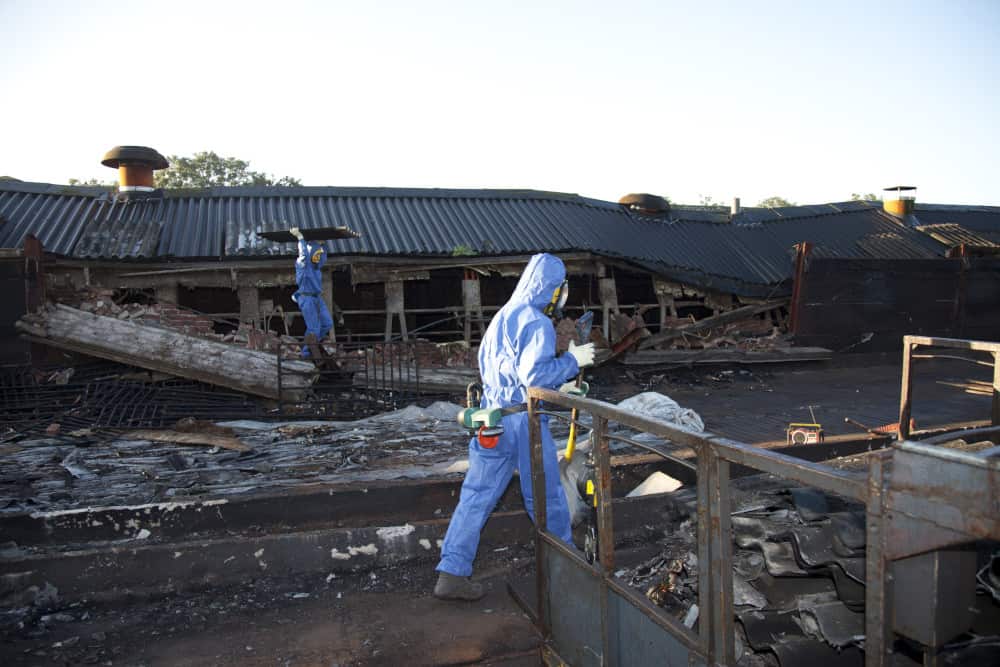When Is Asbestos Dangerous?
Asbestos is a naturally occurring mineral found in rocks and soil. Because of its durability and heat resistance properties, it can be deployed in a number of applications, like an insulator in construction materials or as a non-flammable material.
Asbestos exposure can have significant, adverse health effects. Exposure to asbestos can raise your risk of getting lung cancer too. After being exposed to asbestos, mesothelioma, or cancer of the mesothelial tissue, can develop. Moreover, problems associated with the exposure might take years to reflect.
Working with asbestos increases your chances of getting mesothelioma. When working in an area where asbestos is present, it is strongly advised that you wear a face mask.
When Is Asbestos Dangerous?
Asbestos is dangerous when it is friable! The word “friable” refers to how readily asbestos may be crumbled by hand, releasing fibres into the air. The asbestos insulator that has been sprayed is extremely friable while the asbestos floor tile, on the other hand, is not. Ceiling tiles, floor tiles, undamaged laboratory cabinet tops, shingles, fire doors, siding shingles, and other asbestos-containing materials will not release asbestos fibres unless disturbed or wrecked in a certain way. If an asbestos ceiling tile, for example, is drilled or broken, fibres may be released into the air. If they are left alone and not disturbed in any way, they will not be dangerous.
Damage and degradation will make asbestos-containing materials more fragile. Water damage, constant vibration, ageing, and physical impact such as drill, blending, polishing, chopping, sawing, or hammering can break down the materials, increasing the likelihood of fibre release.

Breathing is the most frequent route for asbestos fibres to enter the body. In reality, asbestos-containing material is not typically regarded as hazardous unless it emits dust or fibres into the air, where they can be breathed or swallowed. Most of those fibres will become stuck in the mucous membranes of the nose and throat, where they can be evacuated, but others can enter the lungs or, if ingested, into the digestive system. When asbestos fibres get stuck in the body, they can create health concerns and can be dangerous.
What Products Can Contain Asbestos?
Asbestos has been unearthed and used since the late 1800s. During World War II, factories began utilizing it even more. Asbestos is in many products, comprising building commodities such as:
Siding, roofing, and cement shingles
Casings for electrical wires are a type of casing.
Millboard.
Joint compound and patching
Insulation for pipes, ducts, and furnaces.
Adhesives and floor tile
Material for soundproofing.
Numerous household derivatives and fabrics also contain asbestos, including:
In gas-fired fireplaces, where artificial ashes and embers are used.
Brake pads and linings for automobiles, as well as clutch facings and gaskets.
Fire-resistant gloves, cooktop pads, table pads, and fabrics (including blankets and curtains).
Plastics, paints, coatings, and adhesives are all examples.
Consumer garden items and vermiculite-based attic insulation.
How does asbestos affect health?
Unless they are released into the air, asbestos fibres are not dangerous. The fibres break down into small particles as they are discharged. We inhale the particles when they become airborne. They then gather in the lungs, scarring and inflaming them.
Determining Factors That Makes Asbestos Dangerous:
- The Amount And Duration Of Exposure – the more you get exposed to asbestos the more fibres will enter your body, and the more possibilities you are to have asbestos-related problems. As there is no “safe level” of asbestos exposure, people who are exposed more often over an extended period of time are more at threat.
- Whether You Smoke Or Not – You are significantly more likely to get lung cancer if you smoke and have been exposed to asbestos than if you do not smoke and have not been exposed to asbestos. If you work with asbestos or have been exposed to it, the first thing you should do to lower your cancer risk is to quit smoking.
- Age – Mesothelioma has been diagnosed in the children of asbestos workers whose only exposure was from dust brought home on the clothing of family members who worked with asbestos. When people inhale asbestos, the younger they are, the more likely they are to develop mesothelioma. This is why tremendous efforts are being made to keep school children safe.
Wrap-Up
Since each exposure to asbestos raises the body load of asbestos fibres, preventing and minimising your exposure is important.